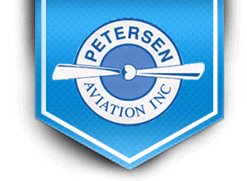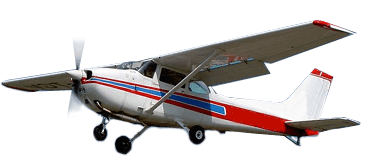Auto Fuel STC Specifications
Installation of an Auto Fuel STC on a low compression 80/87 octane engine is a simple procedure. No major modifications are needed on this type of engine. We provide you with the paperwork and placards required by the FAA to make it all legal. An IA mechanic must "install" the STC by adding the new fuel placards and an engine placard. He then fills out a log book entry and form 337. The whole process takes approximately 30 minutes. No additional modification is required on this type of engine.
The same holds true generally for the higher compression Lycoming 0-360 and 0-320 engines depending upon the airframe in which they are installed. Generally speaking when these engines are mounted in an airframe equipped with a gravity feed fuel system (no fuel pumps), installation of the STCs consists only of paperwork and placards, with no modifications made. Some people then reason why buy an STC if it's only paperwork and placards. Installing the STC makes it possible for you to use an octane different than what was called for on the original Type Certificate while remaining in compliance with FAA regulations. Insurance companies expect you to be in compliance with the FARs, and we are able to contact you if we become aware of any changes in the fuel which could effect your airplane. Using auto fuel without an STC puts one in violation of FARs: Part 43, App. A (2) (vi), 43.3 (a), 43.12.
In some airframes equipped with suction lift fuel systems (pump fed systems), different electric fuel pumps may need to be installed to insure adequate fuel flow, and/or the fuel pump locations must be moved. The STC for the PA-28-160, -161, -180, -181 requires the removal of the factory installed electric pump. This pump is replaced with two completely different pumps and a revised fuel system forward of the firewall. Installation on this airplane takes between four and six hours, approximately double that on 24 volt PA-28's.
Click here for more info on the Piper PA-28, -160 thru -181
A note regarding Lycoming Engines: There are STCs available for increasing 150hp 0-320s to 160hp. Not all of them provide a new data plate when the engine is overhauled and the compression and power are increased. Therefore, it is possible for a 160 hp 0-320 engine to have a model number indicating 150 hp. When ordering a 150 hp 0-320 STC, make certain (by thoroughly examining the engine logbooks) that the horsepower is, indeed, 150 and not 160. The 160 hp 0-320 auto fuel STC requires 91 AKI minimum. The Lycoming 0-320 H2AD engine has not been detonation tested and is, therefore, not approved. Our recommendation for anyone owning one of these engines is to run it out and replace it with any of the other 160 hp 0-320 engines. We will then be able to provide an auto fuel STC.
Octane
The low compression Auto Fuel STCs approve the use of 87 and 88 Anti-Knock Index (AKI) automotive fuel, regular or unleaded. These are minimum numbers, so you can also use premium fuel. High compression STCs require the use of 91 AKI (minimum) premium unleaded or leaded automotive fuel.
Installing the Auto Fuel STC does not restrict you to using only auto fuel. Avgas can still be used, and it can be mixed with auto fuel if you wish. Without the STC, you are limited to only avgas.
The use of gasoline containing alcohol must be avoided because it can cause corrosion in the engine, damage the aircraft fuel system, decrease range, and increase the tendency toward vapor lock.
We recommend that you purchase fuel only from major manufacturers. The quality of fuel from any of the major manufacturers is generally superior to that found at less expensive outlets. By using fuel from a major manufacturer you are more likely to obtain fresh fuel as opposed to fuel which was intended for use the previous season. It is important that the fuel be fresh because of the Reid Vapor Pressure (RVP). Auto fuel has a RVP of between 7 and 9.3 in summer. The specs allow it to go as high as 15 in winter though it seldom does in practice. The exact change to the RVP varies from one part of the country to another. Some states have limited maximum RVPs to reduce air pollution, so, historically, RVPs have been moving toward lower numbers. Vapor lock is not a common occurrence, but it can develop during hot temperatures if the airplane has been serviced with winter blend fuel (high RVP) or with alcohol based fuel. Fuel volatility also affects carb ice. Carb ice can occur more quickly on higher volatility fuel.
Lead
Lead content in grams of lead per gallon:
- 100LL = 2
- 80/87 = 0.5
- Regular Auto Fuel = 0.1
- Unleaded (Premium or Regular) = .001
Until January 1986, regular auto fuel contained a maximum of 1 gram of lead per gallon. It now contains a maximum of 0.1 of a gram per gallon. No minimums were established under the new lead content regulations, so it is possible to obtain regular with the same lead content as unleaded (.001 of a gram per gallon).
We recommend you use one tank full of 100LL every 75 hours to replace lead on the valve seats.By doing so you will be supplying adequate lead for these parts. Also, during break-in following an overhaul or replacement of a cylinder, you should use 100LL for 25 hours in order to supply lead during the break-in process. A mixture of 75% unleaded and 25% 100LL yields a lead content equivalent to 80/87 octane avgas (0.5 gram per gallon). Radial and Franklin engines should use this mixture at all times if possible because they are dependent on lead to prevent valve seat recession.
Burning an occasional tank of 100LL should not be necessary if the valve's guides and seats were constructed in accordance with the latest specifications. In view of the fact that 100LL is eventually slated to be replaced with an unleaded fuel, anyone facing an engine overhaul would be well advised to seek out hardened, newer spec parts. These parts are not available for radial engines as far as we know. However, most horizontally opposed engines can be rebuilt with hardened parts if you seek them out.
People have argued for years as to whether or not lead is necessary. It has always been added to gasoline for the purpose of raising octane. After WWII it became apparent that engines were going beyond the normal TBO. This was attributed to lead acting as a cushion between the valve and seat. While most engines can run satisfactorily on unleaded, our aircraft engines need lead at least during the break in process unless new spec hardened parts have been installed.
ASTM D-439/D-4814/EN228
Auto fuel STCs were developed using fuel blended to ASTM specification D-439. D-439 has now been superseded by D-4814. The difference between the two specs is in the test methods outlined. D-4814 added test methods to be used at the refinery for oxygenates but does not require the addition of oxygenates. Studies have been done in Europe that show EN228 to be virtually the same as D-4814. Hence most European governments accept the STCs.
Environmental regulations sometimes require the addition of oxygenates to gasoline. Reformulated gasoline (RFG) contains oxygenates. Although there are other differences between RFG and standard gasoline, the percentage of oxygenates are what we, as pilots, need to be primarily concerned about.
The most widely used oxygenate today is ethanol. Ethanol cannot be legally or safely used with the STCs. Fuel containing MTBE or ETBE is acceptable and approved. Fuel blended to D-439 or D-4814 without alcohol is acceptable and legal for use with the STCs. If your state does not require compliance to these specs, it does not necessarily mean that your fuel does not comply. Since most states require compliance with these specs, it would not be cost effective for the oil companies to lower their standards in those few states not requiring compliance. Generally, any fuel produced by a major manufacturer is blended to D-4814 or, in countries outside the US, to D-4814 or EN228.
Fuel in countries such as the Philippines and Sri Lanka meet D-4814. One can expect most of the fuel produced on the planet to meet this specification even if it is produced in a country (or state) not requiring compliance specifically with D-4814. There really is no need to require it; selling off spec fuel would not be cost effective for those who are refining and distributing it.
The following states require compliance with D-4814 in whole or in part or require critical specifications values per ASTM D-4814: Alabama, Arizona, Arkansas, California, Colorado, Connecticut, Delaware, Florida, Georgia, Hawaii, Idaho, Illinois, Indiana, Iowa, Kansas, Louisiana, Maryland, Minnesota, Mississippi, Montana, Nevada, New Mexico, North Carolina, North Dakota, Oklahoma, Rhode Island, South Carolina, South Dakota, Tennessee, Utah, Virginia, Wisconsin, and Wyoming.
Only eight states require compliance with the aviation fuel spec D-910. There is no federal requirement for aviation fuel to meet the spec. Therefore control of auto fuel is tighter than it is for avgas.
|






